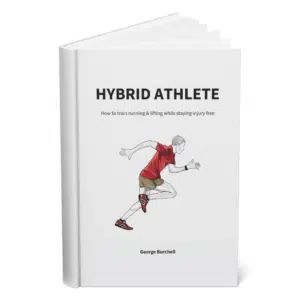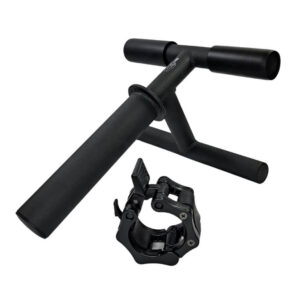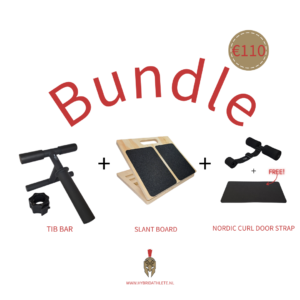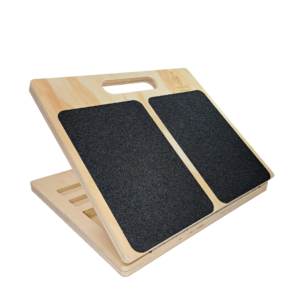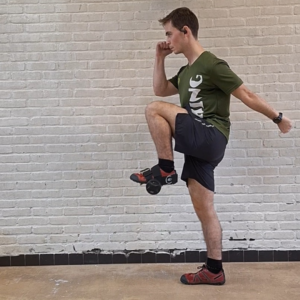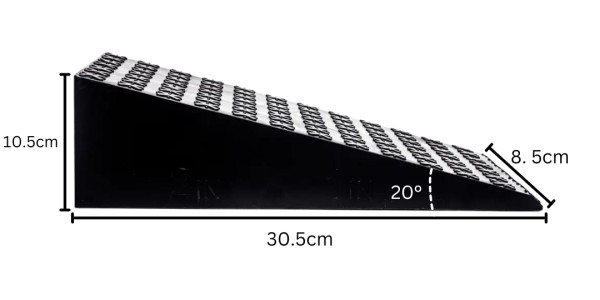
Angled squats, aka heel-elevated squats, are king when it comes to knee bulletproofing.
While the traditional squat is a go-to move for many, adding a slight twist to your squat routine with squat wedges can take your workout to the next level. These simple yet powerful tools enable angled squats, offering unique benefits for beginners and seasoned lifters alike.
In this blog, we’ll explore the purpose of squat wedges, their advantages, and why heel-elevated squats might be the missing piece in your program.
Table of Contents
What Are Squat Wedges?
Squat wedges are small, wedge-shaped platforms, made of industrial rubber, designed to elevate your heels during squats. By lifting the heels, squat wedges create a forward tilt, changing the angle of your squat. This alteration allows for a greater range of motion, enhanced focus on specific muscles, and improved squat mechanics.
Using squat wedges for angled squats isn’t just for those with limited ankle mobility—these wedges can also help advanced lifters target muscle groups more effectively and refine their technique.
How Do Squat Wedges Work?
Squat wedges work by creating an inclined surface for your feet. This incline shifts the emphasis of the squat movement to the quads and knees while reducing stress on the lower back.
For those with limited ankle dorsiflexion (the ability to bend the foot upward), squat wedges are especially useful. Poor ankle mobility can make it difficult to squat deep while maintaining proper form. Angled squats using wedges allow you to achieve a deeper squat by compensating for this limitation, keeping your torso upright, and preventing excessive forward lean.
Beyond mobility, the angle of the squat wedges alters muscle engagement, allowing lifters to focus on different parts of their legs, such as the quads, glutes, and hamstrings.
Angled Squat Benefits
Incorporating angled squats into your workout routine offers numerous advantages, including:
- Enhanced Quad Activation: Elevating the heels shifts the focus to the quadriceps, making angled squats ideal for building stronger, more defined quads.
- Improved Depth and Range of Motion: The incline allows for deeper squats, maximizing muscle engagement, especially for those with limited flexibility.
- Reduced Joint Stress: The altered angle decreases strain on the knees and lower back, providing a safer option for those with joint discomfort.
- Better Posture and Core Engagement: Angled squats promote an upright torso, reducing injury risk while enhancing core activation.
Versatility for All Fitness Levels: Whether you’re a beginner or advanced lifter, angled squats can be customized to suit your needs.
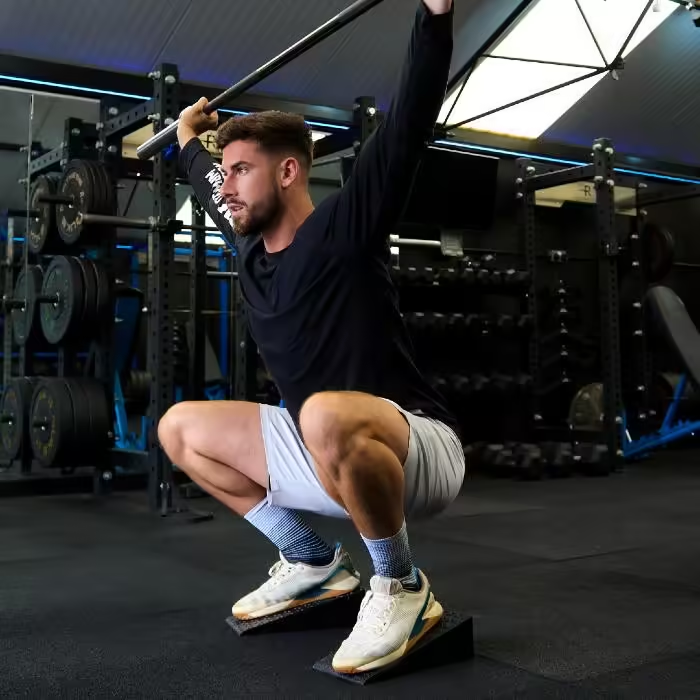
Who Should Use Squat Wedges For Angled Squats?
- Beginners: Learning proper squat mechanics can be challenging. Squat wedges make it easier to maintain an upright posture and build confidence with depth.
- Lifters with Limited Mobility: Tight ankles or hips? No problem. Angled squats help you achieve full range of motion without compromising form.
- Athletes and Advanced Lifters: If you’re looking to fine-tune specific muscle groups or break through plateaus, squat wedges are an excellent tool to add variety and intensity to your routine.
- Those Recovering from Injuries: For individuals rehabilitating from lower back or knee injuries, squat wedges can reduce stress on these areas, making squats safer and more accessible.
Angled Squats are the key to healthy knees and a strong lower body
Squat wedges are an underrated tool that can transform your squat game. By incorporating angled squats into your routine, you can improve mobility, target specific muscle groups, and enhance overall performance. Whether you’re a beginner, an athlete, or someone working around mobility challenges, squat wedges offer an effective and versatile solution.
So, the next time you hit the gym, consider adding squat wedges to your leg day and experience the unique benefits of angled squats firsthand!
Get the best injury-prevention exercise gear at our shop:
GET THE BEST INJURY-PREVENTION TRAINING EQUIPMENT:
Above all, a storyteller. Then comes marketing, branding, writing music, powerlifting, and woodworking.

